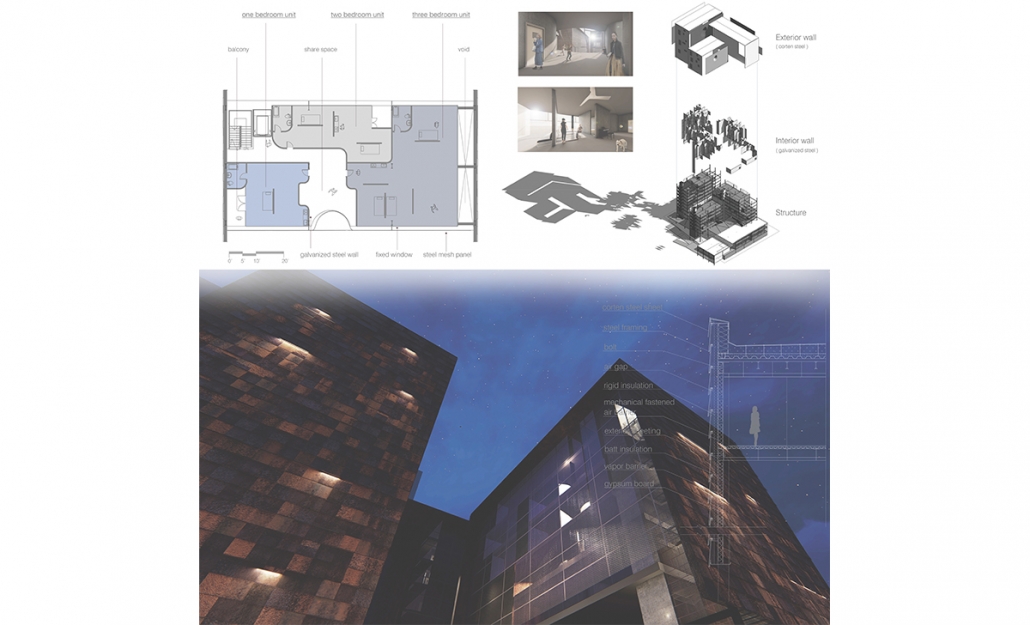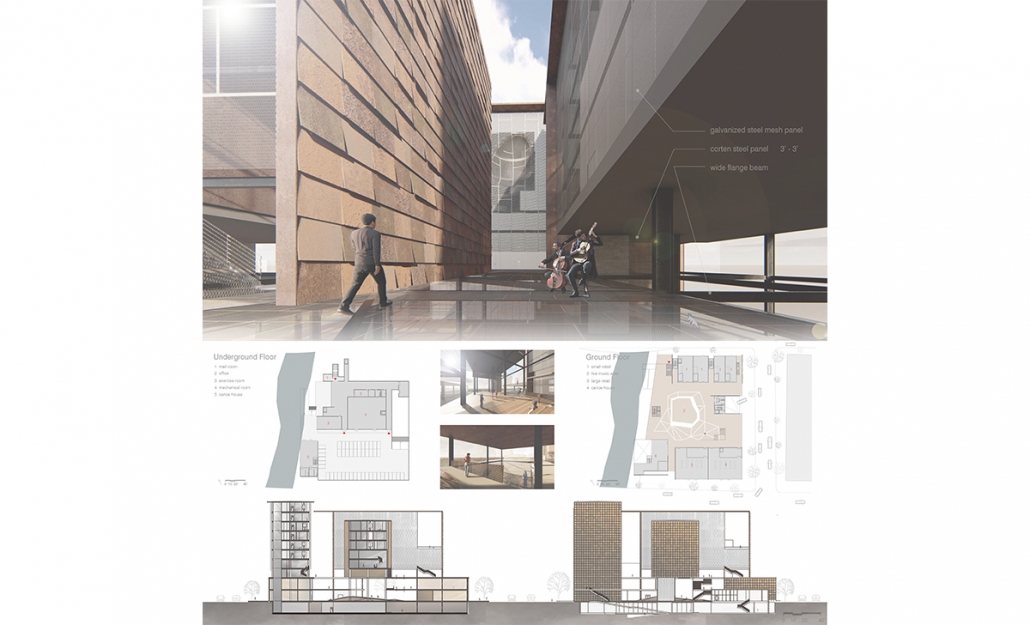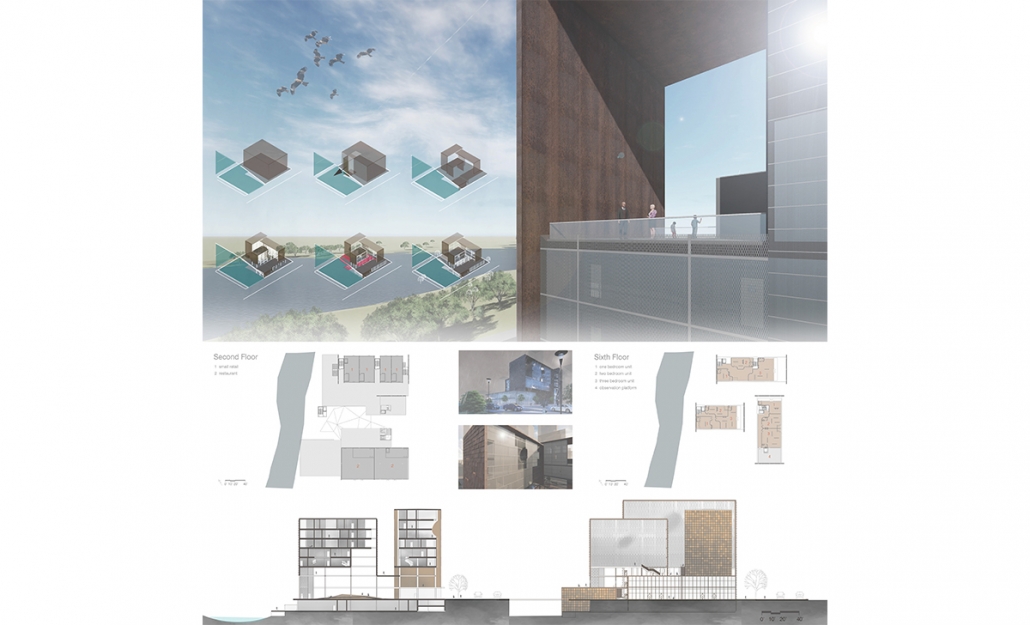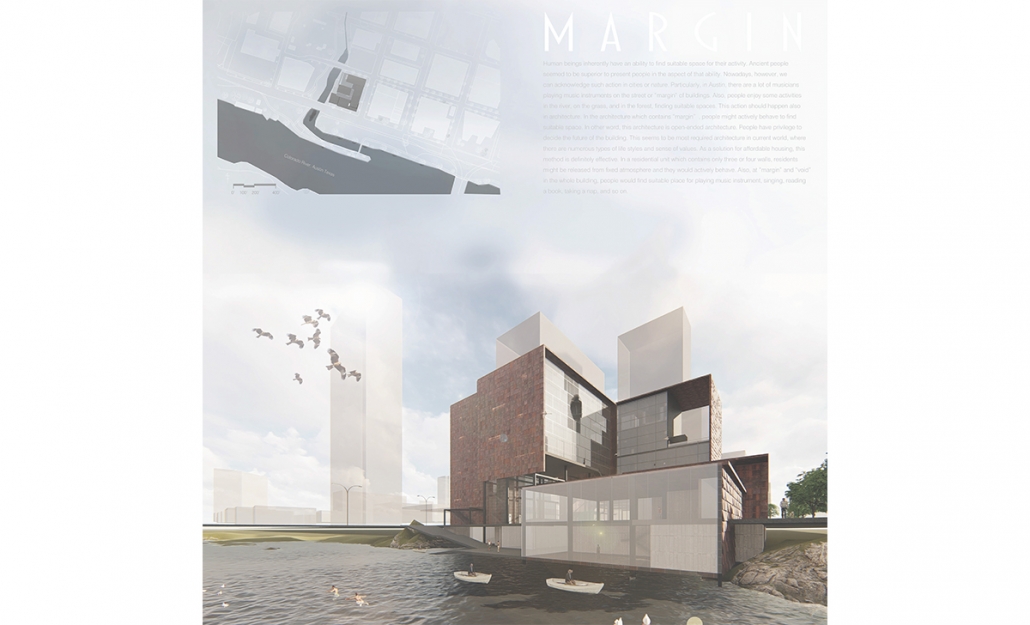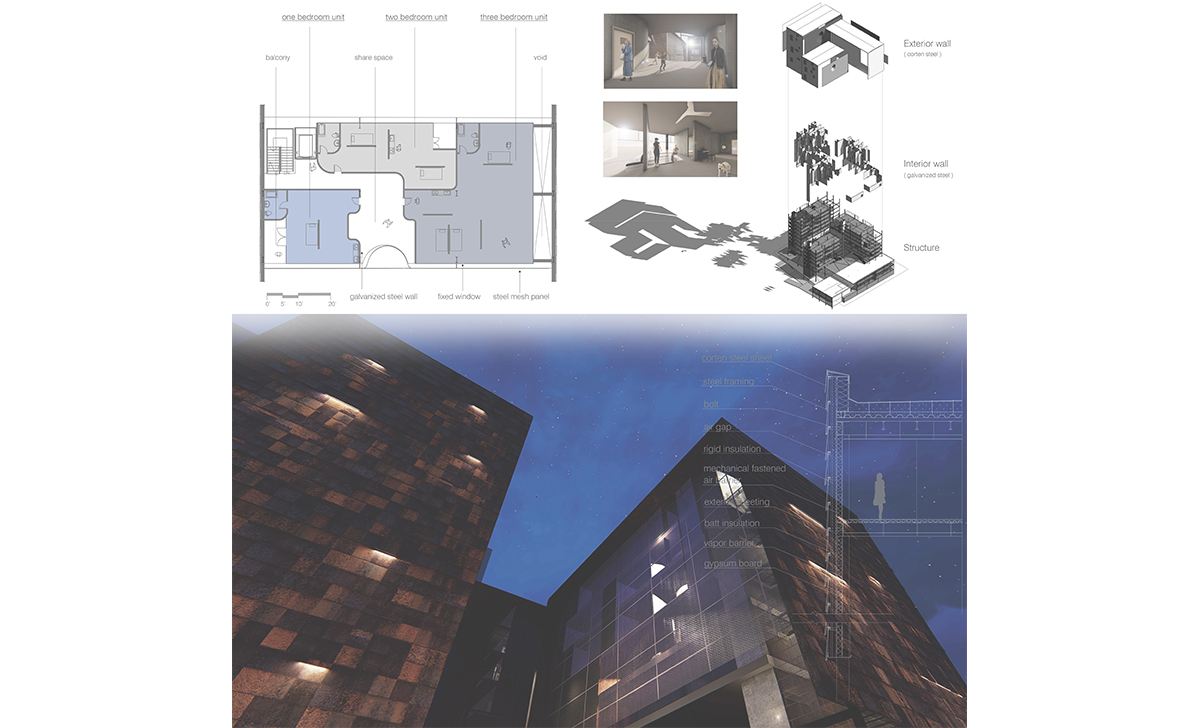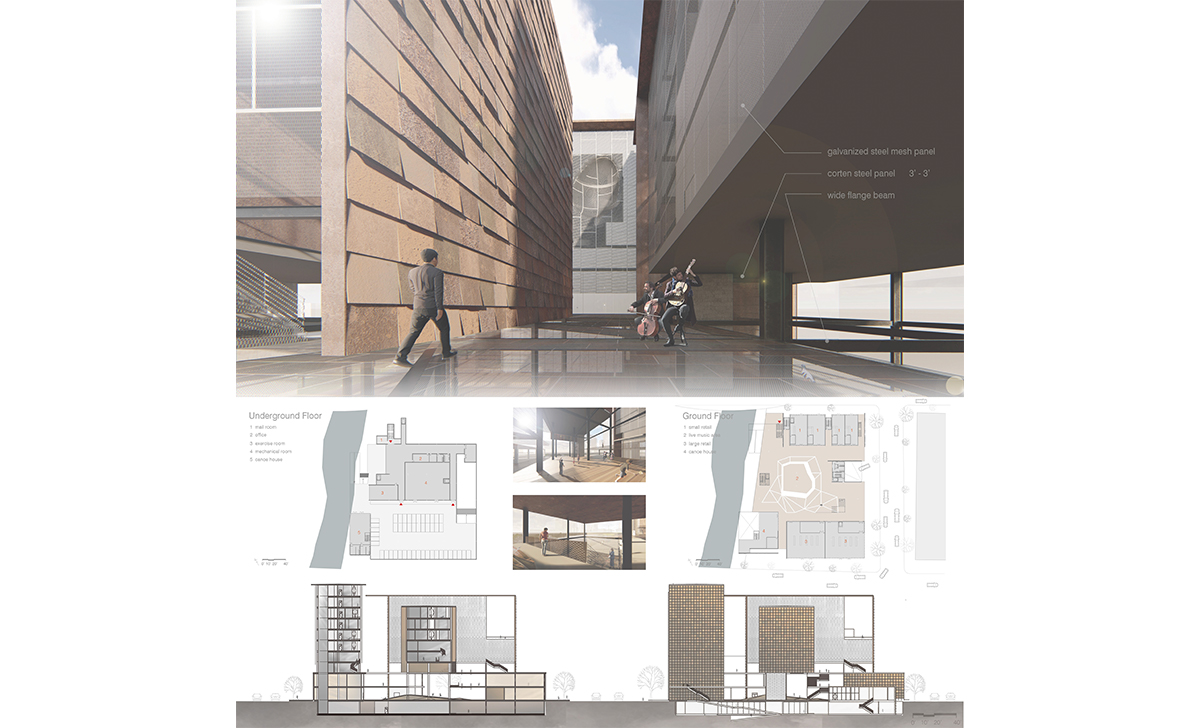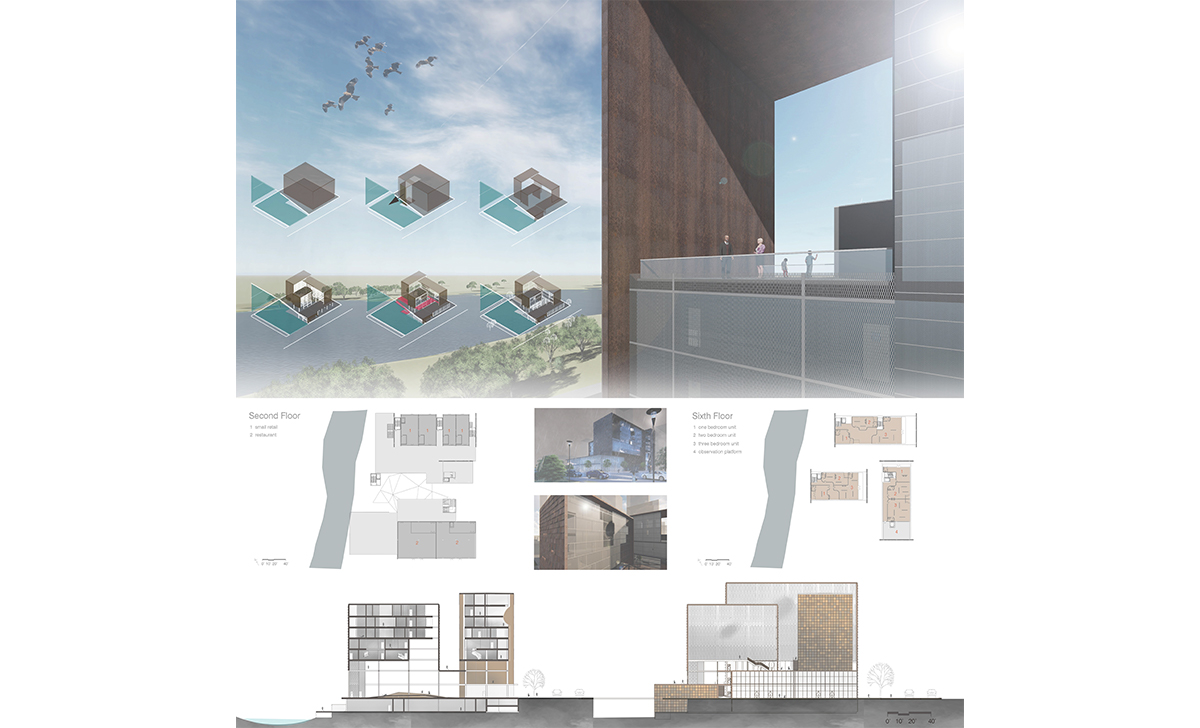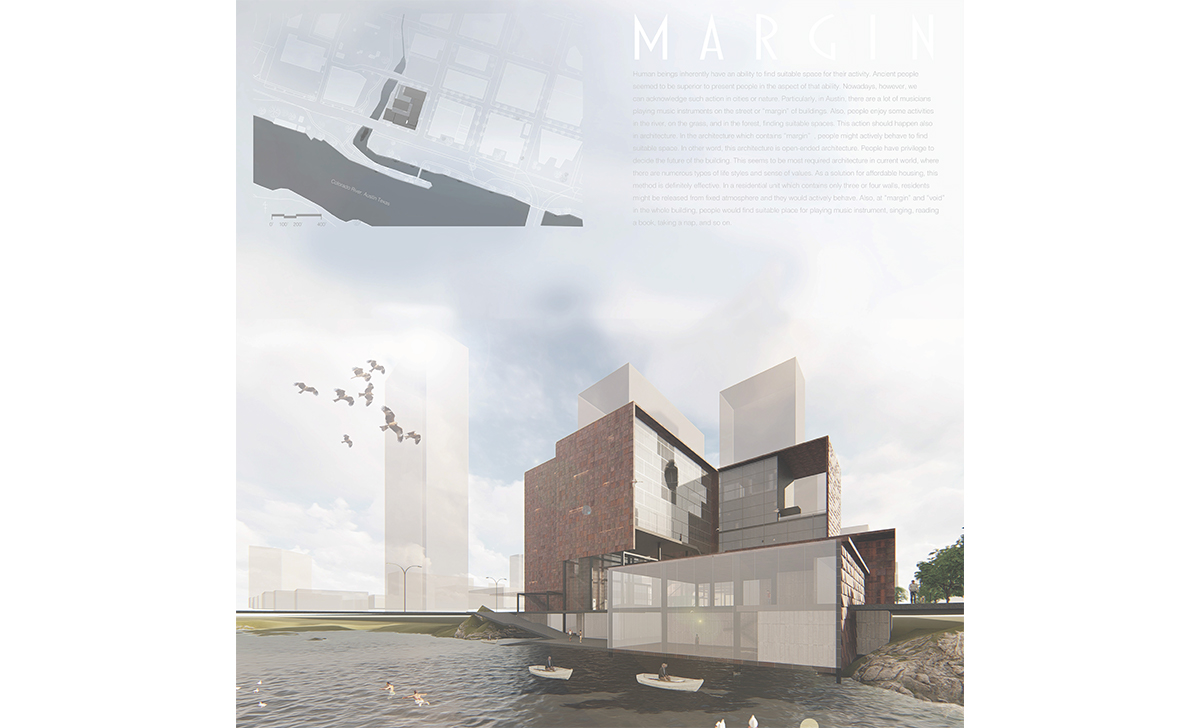2017-2018 Steel Competition Top Ten For Student Winners
Honorable Mention: Affordable Housing
Kengo Kawagashira
Project Description
Human beings have always found ways to adapt to their immediate environment. From ancient times to now, this has held true. No matter the shape of the physical environment, we seek to manipulate the boundaries around us. For example, in Austin, Texas, there are throngs of musicians who play at the “margins” of buildings and engage with the public. The same can be said for those enjoying activities on the river, in the grass, and in the parks around town. These people are released from their fixed atmospheres and can enjoy a freeing self-defined life.
These moments should also be found within architecture. In architecture that contains “margins”, people would actively help to create their own suitable space. In other words, this is open-ended architecture and people have the right to decide the future of their own built environments. This seems to be an extremely necessary form of architecture in the current world, where numerous types of lifestyles and values are coming to the forefront.
This can be a compelling solution for affordable housing. In a residential unit which contains only three or four walls, residents might be released from fixed atmosphere and create a space that works for them. In turn the total cost of the building would decrease due to the small number of components. Additionally, where the “margin” and “void” meet there would be great spaces for tenants’ hobbies like playing musical instruments, singing, reading books, taking a nap, and so on. In this open-ended architecture, people will live in a space of their own margins and populated by the activities they partake in.

 Study Architecture
Study Architecture  ProPEL
ProPEL 